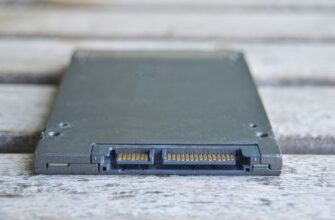- Why Hardware Wallets Are Essential for Crypto Security
- Top 5 Best Hardware Wallets for Crypto in 2023
- In-Depth Hardware Wallet Comparison
- Key Factors When Choosing Your Hardware Wallet
- Setting Up Your Hardware Wallet: Critical First Steps
- Hardware Wallet FAQ: Expert Answers
- Final Verdict: Which Hardware Wallet Wins?
Why Hardware Wallets Are Essential for Crypto Security
In the volatile world of cryptocurrency, security isn’t optional—it’s foundational. Hardware wallets provide the ultimate protection for your digital assets by storing private keys offline in a physical device. Unlike software wallets vulnerable to online hacks, these encrypted USB-like gadgets keep your Bitcoin, Ethereum, and altcoins safe from remote attacks. As crypto adoption surges, choosing the best hardware wallet for crypto becomes critical to prevent devastating losses from phishing scams, exchange collapses, or malware infections.
Top 5 Best Hardware Wallets for Crypto in 2023
After rigorous testing of security features, coin support, and user experience, these devices lead the market:
- Ledger Nano X – Bluetooth-enabled powerhouse supporting 5,500+ coins
- Trezor Model T – Open-source pioneer with touchscreen interface
- Ledger Nano S Plus – Budget-friendly upgrade with expanded storage
- Ellipal Titan – Air-gapped metal body with QR code transactions
- CoolWallet Pro – Credit-card sized with mobile app integration
In-Depth Hardware Wallet Comparison
Ledger Nano X Features:
- Bluetooth connectivity for iOS/Android
- 100+ crypto app installations
- Certified Secure Element (CC EAL5+)
- Built-in battery for mobile use
Trezor Model T Advantages:
- Full-color touchscreen display
- Supports Bitcoin Lightning transactions
- Password manager functionality
- Shamir Backup for seed splitting
Key Factors When Choosing Your Hardware Wallet
- Security Architecture: Prioritize devices with Secure Element chips and open-source firmware
- Coin Compatibility: Verify support for your specific cryptocurrencies
- User Experience: Consider screen size, button placement, and companion apps
- Price vs Value: Balance features with budget ($50-$250 range)
- Recovery Options: Ensure robust seed phrase backup systems
Setting Up Your Hardware Wallet: Critical First Steps
Proper initialization prevents catastrophic errors:
- Download software ONLY from official websites
- Generate new wallet & write recovery phrase on paper (never digitally)
- Set strong PIN code (7+ digits)
- Perform test transaction with minimal amount
- Enable passphrase feature for hidden wallets
Hardware Wallet FAQ: Expert Answers
Q: Are hardware wallets hack-proof?
A: While significantly safer than hot wallets, physical access exploits exist. Always use passphrase protection and purchase directly from manufacturers.
Q: Can I store all cryptocurrencies?
A: Most support Bitcoin, Ethereum, and major altcoins. Verify compatibility for newer tokens before purchasing.
Q: What happens if I lose my device?
A> Your coins remain secure. Use your recovery seed phrase on a new device to regain access.
Q: How often should I update firmware?
A> Immediately when notified. Updates patch vulnerabilities and add coin support.
Q: Are budget wallets like Ledger Nano S Plus secure?
A> Yes—they use the same security chips as premium models, just with fewer features.
Final Verdict: Which Hardware Wallet Wins?
For most users, the Ledger Nano X delivers the ideal balance of top-tier security, extensive coin support, and Bluetooth convenience. Crypto veterans may prefer the Trezor Model T for its advanced open-source features. Beginners should consider the Ledger Nano S Plus as the best entry-point hardware wallet. Whichever you choose, remember: the best hardware wallet for crypto is the one you’ll consistently use correctly—your digital fortune depends on it.








